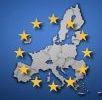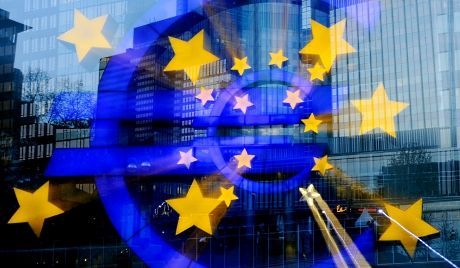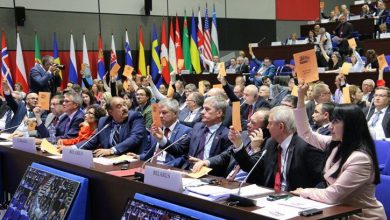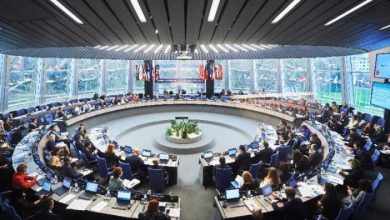United States of Europe – Euro-optimist choice
The European Central Bank, providing the activities of the EU Unified Supervisory Mechanism, will directly control the work of one thousand banks in the eurozone. Experts note that this is a federal system of the American type. According to many of them, the future lies with the United States of Europe.
The problem of choosing the direction of European development arose exactly at that moment when the inefficiency of the European Union, combining many diverse national economies, became apparent to the expert community and the political establishment. It was clear to many that things would go just in such a bad way even before the formation of the EU. As aptly noticed (though for a different reason) A.S. Pushkin, “It’s impossible to harness a Horse and a trembling doe in one cart. I forgot inadvertently: Now I pay a tribute to foolishness.”
The situation in the EU is developing in strict accordance with the quote from the poem “Poltava”. The “locomotives” of European integration in the north of the continent pay a rich tribute for the “mistakes of youth” without hoping to return at least part of the money. The outsider countries that have successfully used and continue to use the help of the “founding fathers” do not even think to thank for the compelled generosity not to mention voluntarily cutting their expenses.) On the contrary, indignant southerners even in times of crisis demand maintaining the achieved standard of living regardless of their real incomes. In total, 27 member countries are struggling to pay as little as possible and get as many grants as possible. This creates a voltage node, which is considered by many experts, it is unlikely to be cut in the current circumstances.
On the other hand, indignant Europeans can be understood – this was not dreamed of 20 years ago. According to sociologists, almost a quarter of them barely make ends meet. This is mainly happening in the countries of the former socialist camp, for which, as Rossiyskaya Gazeta writes, the coveted membership in the European Union did not become a ticket to paradise. The most disadvantaged on this list was Bulgaria. Four years after joining the EU, there is clearly nothing to boast of Sofia: 49 percent, that is, almost half of the citizens of this state, are recognized as dysfunctional. Romania and Latvia shared the second place (40 percent of the poor each), and Lithuania the third (33 percent). Among Greeks and Hungarians, low-income residents are approximately 31 percent.
Brussels such statistics, of course, depressing (not to mention the young Europeans themselves). After all, material well-being was proclaimed the main value of the integration project called “united Europe”. But outsiders have failed to catch up with traditional European countries. Moreover, the gap between them is growing rapidly. However, not everything is alright with the “indigenous” European population. In Sweden and the Netherlands, the poverty rate is 16 percent, Austria and Luxembourg – 17, in Germany and France – almost 20 percent each. At the same time, there is a erosion of the European middle class, which, as you know, is the basis of the economic prosperity of any state. There are fewer qualified specialists, taxes are rising, and state social support is not always sufficient. In general, the Rossiyskaya Gazeta concludes, the beautiful slogan of the times of Adenauer “Well-being for all” seems to be a long thing in the past.
The question is, what to do next? The range of opinions is quite wide: from movement to a superpower to a return to individual states. However, voices are increasingly being heard about reformatting the European project from an amorphous supranational union to a federation. Ex-Prime Minister of Belgium and the leader of one of the largest factions in the European Parliament, Guy Verhofstadt considers the United States of Europe the most realistic option.
The Belgian recalls that Europe already has a common currency. One must be consistent and create an economic union, a fiscal union, a banking union, and finally, a political union. Otherwise, the single currency will not stand, because it cannot exist without a state. Hence the crisis. At the same time, the former Belgian prime minister finds it unprofitable to consider the option of a huge centralized state, which must make all decisions for all five hundred million Europeans. The future, in his opinion, lies with the state, which transfers enormous power to regions and nations. The Federation denotes one structural basis, a common economic strategy, and nations bring it all to life in their own way, but within a common framework.
A similar approach finds understanding among some European politicians. Last fall, European Commission President Jose Manuel Barroso, describing the current crisis in the eurozone as a lack of political unity of partners, announced that there is a need “to go to a federation of nation-states. This is our political horizon. This should determine the direction of our work in the coming years.”
However, the idea of the United States of Europe is not new in itself. Experts name the many politicians and thinkers of the past who reasoned in this vein. Of the most famous, Winston Churchill has consistently advocated for the European Federation under the dominant role of the United Kingdom. All these plans have remained good wishes.
“In principle, the topic is not new at all. It was with it that the discussion of a certain European unity began. Now there is a new round of this discussion. I think that in the near future we will not see any fundamental changes. Rather, the rhetorical changes. The nearest solutions will be technical character. Talks about federation will remain talk. And practice will remain standard for the European Union, “said Sergei Utkin, head of the European Integration Problems Department at IMEMO RAS.
Today, it is difficult for European political leaders at the national level to understand and accept the fact that they must share sovereignty in order to survive. In fact, today the banking community is forcing them to take this step, having begun a rather painful process of searching for new integration meanings. Moreover, most of the current problems could have been avoided if the Europeans had clearly followed the terms of the Maastricht Treaty of ’92, from which, in fact, the EU began.
Oleksandr Burian, Doctor of Law, recalls that Eurointegration stands at the “three pillars”: firstly, the economic and monetary union, secondly, a common foreign and security policy and thirdly, a common policy in the field of internal affairs and justice. In principle, if these provisions were implemented, they would consolidate federal relations within the EU. However, at referenda in 2005 in France and the Netherlands, the draft unified EU Constitution was rejected, and the entire European Union was in a double position, since further implementation of the provisions of the Maastricht Treaty became unrealistic.
The hasty and not thoroughly thought out expansion of the European Union, Alexander Burian concludes, has led to the emergence of new problems. The principle of making the most important decisions by consensus, which had worked well until then, turned out to be less effective under the new conditions. Partly from too many participants in the decision-making process. Partly from the too ambitious demands of some of the new EU members.
In addition, after the accession to the EU of twelve new countries, the level of economic development of which was significantly lower than the average European one, the leaders of the European Union (Germany, France, Great Britain, the Netherlands) found themselves in a situation where the main burden of budget expenditures on the social sphere, subsidies to agriculture, etc. d. began to lie precisely on them. At the same time, the new members of the European Union did not want and do not want to increase the share of deductions to the Union budget beyond the level defined by EU documents of 1 percent of GDP.
It should be noted that the fate of Europe very much depends on the Russian factor. Whatever forms continental integration takes, it should be acceptable to Russia in its basic characteristics. And here the issue of rapprochement along the East-West line again arises on the agenda. Of course, it is rather pointless to demand from Russia that it enter some United States of Europe. But close cooperation with her is for the Old World a guarantee of her own survival.
“Without Russia, Europe has no future at all in any of the options. Until the problem of continental security is resolved, the prospects for Europe are rather gloomy. This problem can only be solved with Russia. Now the policy of pushing Russia out of Europe continues. If the option is not accepted , which provides for equal and mutually beneficial participation of Russia in the pan-European association, I’m more likely to fall into the category of Eurosceptics, “says Igor Maksimychev, chief researcher at the Institute of Europe of the Russian Academy of Sciences.
In general, Europe has failed to develop a unified view of continental security. Perhaps the whole thing is in the foggy relationship between NATO and the EU. Among the EU members there are countries that are members of NATO (Germany, Great Britain, France, Italy, Spain), and they must coordinate their defense policy with other members of this organization. And there are countries that are not members of NATO (Austria, Sweden, Finland) that do not need such coordination, moreover, it burdens them. In addition, non-EU countries (Turkey, Norway) and even non-European countries (USA, Canada) are members of NATO. In this situation, it is clear why the interests of the EU and those of NATO do not always and not in everything, to put it mildly, coincide.
In addition, the principle of decision-making within the framework of NATO is significantly different from the principle of decision-making within the EU. Since the main burden of NATO funding lies with the United States, Washington’s opinion is decisive. As the saying goes, “he who pays the girl dances.” Opinions of European capitals in this regard are assessed as secondary. In addition, NATO is pulling Europe back. The global confrontation ended long ago, but the Alliance did not dissolve itself, like the Warsaw Pact. On the contrary, it expanded and continues the Cold War, looking for new enemies and new allies.
In general, on the way to the United States of Europe, we see many obstacles that are insurmountable from the perspective of today. The pluses of the federation fade into the background before the inevitable minuses of the transition period, which promises literally revolutionary changes. The Old World, of course, does not want this. Enough trials have fallen on the century of the present generation of Europeans. However, this does not mean that talks about the United States of Europe should be stopped. After all, discussions help to outline the most rational path, and indeed to clarify the attitude of the European majority towards such a perspective.
This post is also available in:
 English
English  Русский (Russian)
Русский (Russian)






